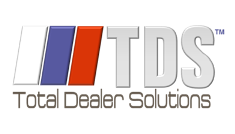To reconcile your parts inventory to your parts general ledger you’ll need to take your ending inventory balance and compare that to your GL closing balance for the same date. You will also need to account for all your reconciling items. Using the following calculation will give you your variance:
Variance = Ending Inventory – (GL Closing Balance + Reconciling items)
What is a reconciling item?
A reconciling item is anything that has already affected your parts inventory that has not been posted to the GL yet. For example, parts received not invoiced, appreciation/depreciation, parts returned not credited. You will also want to account for anything that that has already been posted to accounting but has not affected your inventory yet (parts billed not received and prepaid special orders).
How do I track my reconciling items?
This is the tricky part and can be time consuming. Since there is no easy way to track reconciling items in most DMS systems you must track them manually throughout the month using something like an Excel document and keep backup documentation of invoices, packing slips, claims, etc. This is where automated software like PartsRec is incredibly helpful because it automatically tracks your reconciling items and does a daily reconciliation. Learn more
Should I do a month end reconciliations?
Yes! Doing monthly parts inventory to general ledger reconciliations is a best practice. However, it is not fool-proof. Many dealers who do month end reconciliations still don’t have variance under control and aren’t sure why problems keep happening or what is causing the discrepancy.
How do I fix my parts to GL shortage (or overage)?
To fix a problem you need to know what caused it. Unfortunately, without an entry to entry reconciliation this is very hard to do. Most often parts pad to GL variances are caused by a bunch of smaller issues that can add up to significant amounts.
Errors occur in both the parts and accounting departments. Common issues include: parts billed not received, freight/discounts/adjustments coded and posted to inventory GLs, invoices posted as credits vs. debits and vice versa or double posted.
Unless the error is obvious, many dealerships will make a GL adjustment and move on to the next month hoping one month they’ll be over and the next under to wash out, but this is rarely the case. Dealers are vulnerable and could be losing money.
How do I reduce my variance to zero?
Once you have identified why your variance is off the goal is to reduce those errors to get your variance stabilized. If significant errors are found a full 3rd party physical inventory is recommended. Once variance is stable, the next step would be to make a GL adjustment to get variance to zero. Then, with daily tracking, variance should be kept at zero and shortage/overage errors corrected throughout the month.
Learn more about how you can reconcile daily and reduce variance to zero.
